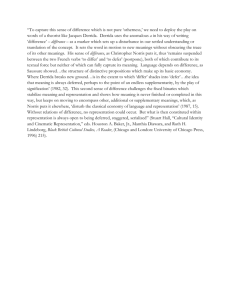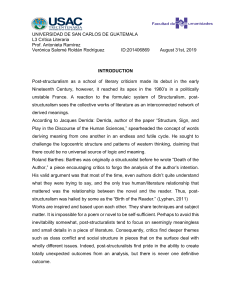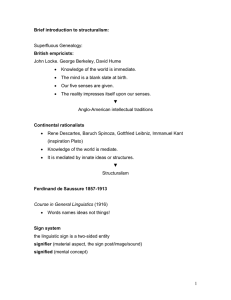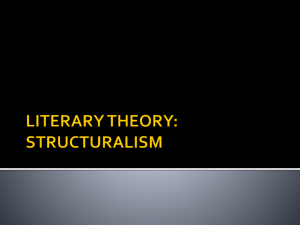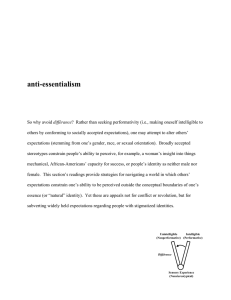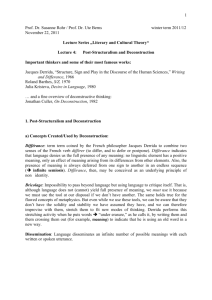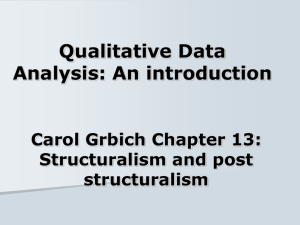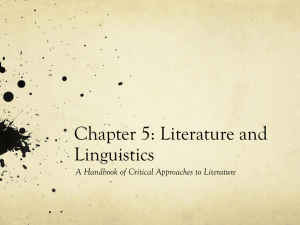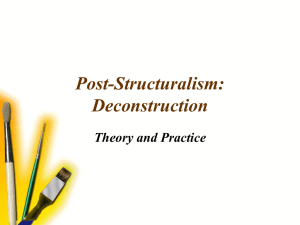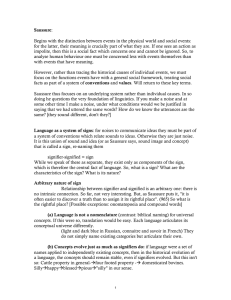Two main tracks in literary theory
advertisement
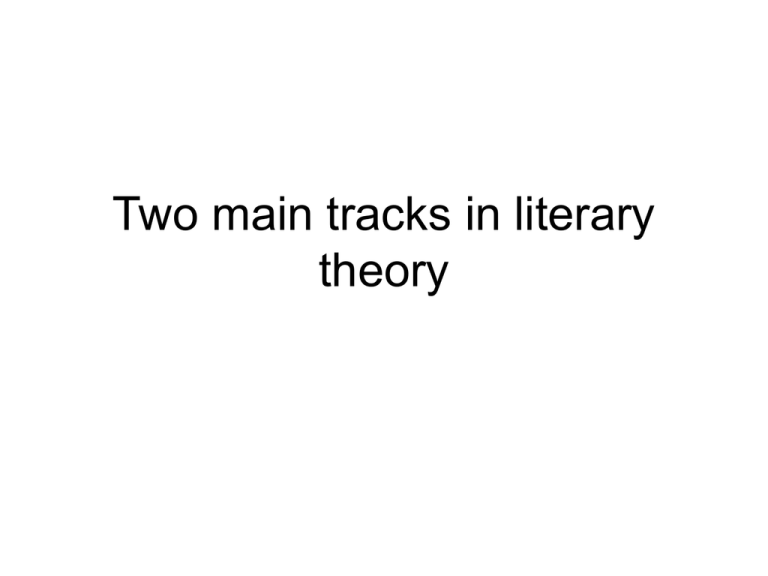
Two main tracks in literary theory • One is from I.A Richards’ notion of “practical criticism” • “close reading” • The best way to study literature was to study the text itself in close detail, and to disregard anything outside the text itself, including the author’s biography, the historical context, how it related to other works etc. General principles of structuralism 1. Meaning occurs through difference 2. Relations among signs are of two sorts, contiguity and substitutability 3. Structuralism notes that much of our imaginative world is structured of, and structured by, binary oppositions 4. Structuralism forms the basis for semiotics, the study of signs, a sign is a union of signifier and signified • Through structuralism, literature is seen as a whole; it functions as a system of meaning and reference no matter how many works there are, two or two thousand. Thus any work becomes the parole, the individual articulation, of a cultural langue, or a system of signification. As literature is a system, no work of literature is an autonomous whole; similarly, literature itself is not autonomous but is part of the larger structures of signification of the culture. Is deconstruction similar to destruction? Literary Deconstruction: --show the hidden gaps in a text’s meaning. Textual unity -- Reverse the “hierarchical” binaries, and allow the latter to supplement the formers. -- de-stabilize, de-center, but not destroy. Why is language ambiguous? • Why are meanings undecidable & slippery? 1. Polysemy: Traces of other signs, other meanings. (e.g. national “birthday”;; the uncanny) 2. Multiple Context; Reference Undecidable. (e.g. “The end of the world” ) 3. Meaning is not “present” in language; it happens “in between” signifiers. 4. (intention and the unconscious) Writing and Différance Language a system of difference of Différance. * While structualists had treated binary oppositions as stable terms in a formal structure, Derrida sees them as organized in unstable disequilibrium. because of the presence/absence of traces * Derrida sees the signified’s also in a relation of difference, and they are turned into signifiers floating signifiers. Writing and Différance Language a system of difference of Différance. * While structualists had treated binary oppositions as stable terms in a formal structure, Derrida sees them as organized in unstable disequilibrium. because of the presence/absence of traces * Derrida sees the signified’s also in a relation of difference, and they are turned into signifiers floating signifiers.
